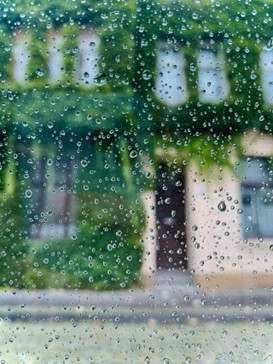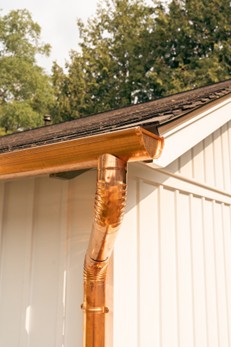
As the rainy season approaches, homeowners enter a crucial window to prepare their properties for the challenges that come with heavy downpours and unpredictable storms. While rain is essential for the environment, it can also reveal weak points in your home’s exterior that may lead to leaks, water damage, or structural issues if left unaddressed. Taking early action, such as scheduling necessary repairs, inspecting vulnerable areas, and performing routine gutter cleaning, can go a long way in protecting your investment, preserving your home’s condition, and keeping your family safe.
This guide offers practical, effective tips to help you get your home rainy-season ready, focusing on exterior upkeep, drainage solutions, and preventive maintenance that reduce the risk of costly water-related problems.
Your roof is your home's first line of defense against rainwater. A strong, well-maintained roof prevents leaks that can cause structural damage and mold growth inside your home. Begin your rainy season prep by carefully inspecting the roof for:
Missing or damaged shingles: Look for any shingles that are cracked, curled, loose, or missing entirely. These can allow water to seep into the underlying structure.
Damaged flashing: Flashing around chimneys, vents, and skylights should be intact and sealed to prevent leaks.
Signs of wear or sagging: Any dips or sagging areas might indicate structural issues that need immediate attention.
Accumulated debris: Remove leaves, twigs, and moss, which can retain moisture and accelerate roof deterioration.
If you notice any damage, hire a professional to conduct necessary repairs or replacements before the rains begin. Preventing leaks before they start will save you from extensive interior damage later.
Efficient water drainage away from your home’s foundation is critical to avoid basement flooding, soil erosion, and foundation cracks. Here are key areas to focus on:
It’s important to emphasize that clearing debris from gutters and downspouts allows water to flow freely and prevents overflow that can damage your siding and foundation. Inspect gutters for clogs and leaks, and make sure downspouts direct water at least 3 to 4 feet away from your home’s foundation.
The land surrounding your home should slope away from the foundation to encourage proper drainage. If water pools near your foundation during heavy rain, consider regrading the soil or installing a French drain or swale to redirect water flow.
Check for cracks or depressions where water can accumulate. Seal cracks in concrete or asphalt and fill low spots to prevent puddling that could cause erosion or seep into the foundation.
Windows and doors are common entry points for rainwater and drafts. Inspect the caulking and weatherstripping around all exterior windows and doors and replace any cracked or missing materials. Proper sealing helps:
Pay special attention to basement or ground-level windows, which are especially vulnerable to flooding.
The exterior walls of your home shield it from the elements, but over time, cracks, gaps, or worn paint can compromise their effectiveness. During your pre-rainy season inspection, look for:
Cracks or holes: Repair cracks in stucco, brick, or siding to prevent water from penetrating the walls.
Loose siding panels: Reattach or replace any siding that has become loose or damaged.
Peeling paint: Repaint surfaces where paint is peeling or chipped, as paint acts as a water-resistant barrier.
Mildew or mold: Clean any growths from siding with appropriate cleaners to prevent deterioration.
Regular maintenance of exterior walls not only enhances curb appeal but also guards against moisture infiltration and long-term damage.

Your home’s foundation is critical to its stability. Before the rainy season, walk around the perimeter and look for any cracks or gaps. Small hairline cracks are common, but larger or growing cracks can allow water to seep into your basement or crawlspace, leading to mold growth and structural issues.
If you find significant cracks, consult a foundation specialist who can recommend repairs such as sealing, epoxy injections, or underpinning. Early intervention can prevent costly foundation damage later.
Beyond gutters and grading, other outdoor features can impact how your property handles rainwater:
Rain barrels and water catchment: If you use rain barrels, ensure they are clean and functioning properly to collect runoff effectively.
Sump pump maintenance: Test your sump pump to ensure it’s operational, and clean any debris from the pit.
Drainage channels and pipes: Inspect exterior drainage pipes for blockages or damage.
Maintaining these systems helps manage excess water and keeps your home dry.
Heavy rain combined with strong winds can cause overgrown branches to break and damage your roof, siding, or windows. Trim back any tree limbs that hang close to or over your home to reduce this risk. Also, clear away fallen leaves and debris from around your foundation to improve drainage and reduce the chance of pest infestations.
Outdoor furniture, grills, and garden tools can be damaged by prolonged exposure to rain. Before the rainy season, clean and store them in a covered area or use waterproof covers. This simple step extends their life and keeps your outdoor space tidy.
Rain and moisture can affect outdoor electrical components, causing hazards or failures. Check all exterior lighting fixtures, outlets, and wiring for signs of wear or damage, and ensure they are rated for outdoor use. Replace any faulty components to keep your home safe and well-lit during wet, dark conditions.
While routine cleaning can be done by homeowners, some exterior grime, mold, and stains require specialized equipment and expertise to remove thoroughly. Hiring a professional to refresh your home’s siding, driveway, and patio can enhance curb appeal and prevent damage caused by algae, mildew, and dirt buildup.
Professional services often use advanced methods, including eco-friendly detergents and one mention of pressure washing, to restore surfaces safely without causing damage.
Preparing your home for the rainy season doesn’t have to be overwhelming. By taking these simple but vital steps, you can protect your property from water damage, reduce maintenance costs, and maintain the comfort and safety of your living space. From inspecting your roof and foundation to managing drainage and maintaining exterior surfaces, consistent care is the key to weathering the storms ahead.
Investing a little time and attention before the rains arrive not only safeguards your home but also provides peace of mind throughout the wet season. If any tasks seem too challenging or time-consuming, don’t hesitate to seek help from qualified professionals who can ensure your home is thoroughly protected and ready for whatever the skies bring.